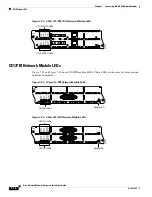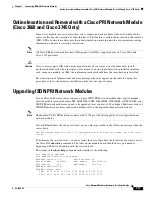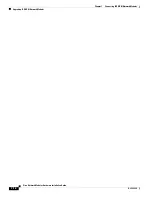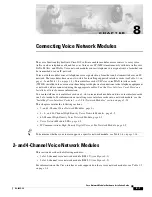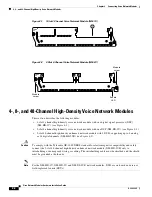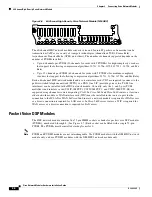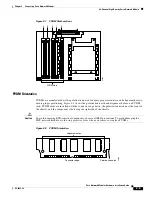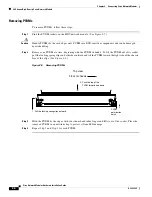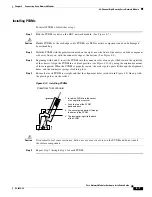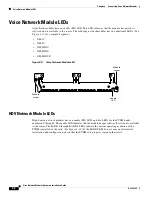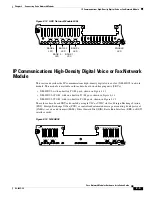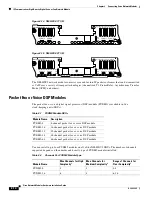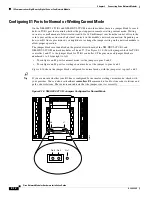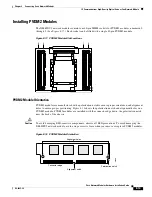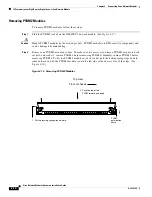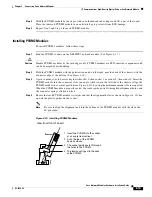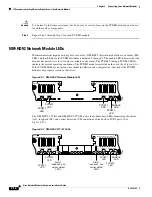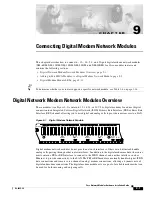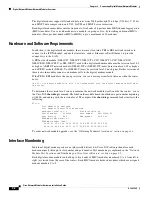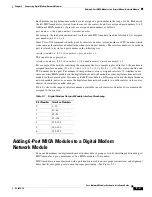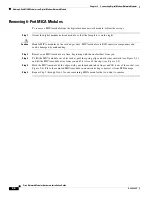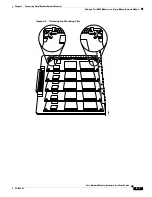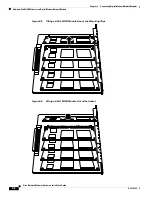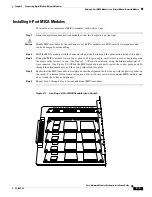
8-12
Cisco Network Modules Hardware Installation Guide
OL-2485-20
Chapter 8 Connecting Voice Network Modules
IP Communications High-Density Digital Voice or Fax Network Module
Configuring E1 Ports for Normal or Wetting Current Mode
On the NM-HDV2-1T1/E1 and NM-HDV2-2T1/E1 network modules there is a jumper block for each
built-in T1/E1 port that controls whether the port supports normal or wetting current mode. Wetting
current is a small amount of electrical current (60 to 140 milliamps) sent from the central office to the
card to prevent the corrosion of electrical contacts in the module’s network connection. Depending on
how your E1 line is provisioned, you might have to change the jumper setting on the network module to
allow proper operation.
The jumper blocks are identified on the printed circuit board of the NM-HDV2-1T1/E1 and
NM-HDV2-2T1/E1 network modules as J6 and J7. (See
Figure 8-16
.) J6 is the jumper block for T1/E1
controller 1 and J7 is the jumper block for T1/E1 controller 0. The pins on each jumper block are
numbered 1 to 3 from right to left.
•
To configure an E1 port for normal mode, set the jumper to pins 2 and 3.
•
To configure an E1 port for wetting current mode, set the jumper to pins 1 and 2.
Figure 8-16
shows the jumper block configured for normal mode, with the jumper set to pins 2 and 3.
Tip
If you are unsure whether your E1 line is configured for normal or wetting current mode, check with
your provider. You can also use the
show controllers E1
command to look for line code violations and
path code violations. These errors can indicate that the jumper is not set correctly.
Figure 8-16 NM-HDV2-2T1/E1 Jumpers Configured for Normal Mode
135658
J7
J6
Pin 1
Pin 2
Pin 3

